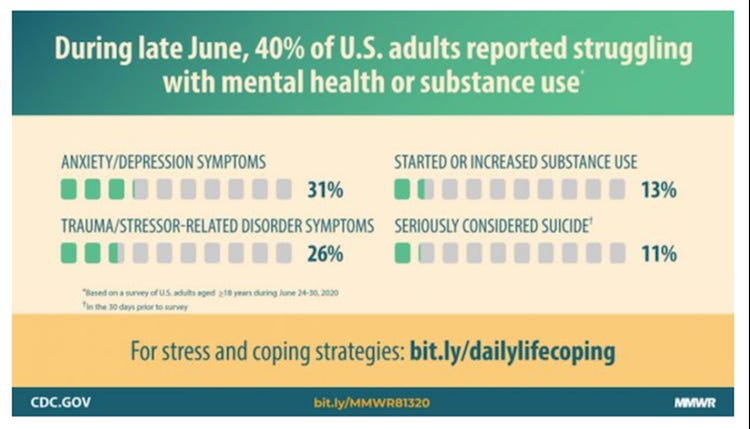Consumers’ shifting buying patterns, heightened health and safety expectations, and focus on sustainability present new packaging design challenges in the COVID-19 and post-pandemic realities.

Product packaging has developed an even more vital role in the COVID-19 world.
Early shelter-at-home orders made food delivery and ecommerce a necessity, driving increased packaging demand. And concerns over surface contamination changed the way that many people interact with the packaging that arrives in their homes.
Even with states re-opening, these trends continue and most people expect that these changes will persist even after the pandemic is behind us.
Packaging design is cued up to respond to the new normal in three ways.
1. Product packaging is adapting to shifting buying patterns.
The coronavirus pandemic has changed the way that people shop.
Running out to the store now carries inherent risks that simply weren’t a consideration before. For many people, online shopping has become the safest choice.

Ecommerce traffic has spiked significantly. This means it’s more important than ever for packaging design to accommodate the rigors of shipping but also preserve that important unboxing experience.
Going forward, packaging designers must be mindful of the additional physical demands being placed upon packaging to accommodate shoppers’ preference for online buying.
2. Product packaging must meet heightened health and safety standards and expectations.
The novel coronavirus has prompted people all over the world to question the safety of the products they bring into their homes.
Fear of contamination has been lowered — but not eradicated — by the CDC’s reassurances that “transmission of novel coronavirus to persons from surfaces contaminated with the virus has not been documented,” or that touching a surface with viral particles on it “…is not thought to be the main way the virus spreads.”
As a result, many people are disinfecting or quarantining packages before bringing them into their homes.
Packaging design must adapt to meet both the physical need and psychological desire for safer, more hygienic packaging.
Physical Health: There are a number of ways to prioritize health in packaging design.
Keep in mind the importance of protecting products from possible viral exposure. Among other things, avoid product packaging with open cut-outs that would impact the integrity and hygiene of the products.
In addition to providing additional packaging to protect products, you can also make strategic choices about the packaging materials themselves.
The National Institutes of Health study that has become the primary guideline for how long the SARS-CoV-2 virus can survive on various surfaces states that the virus can survive “…up to 24 hours on cardboard and up to two to three days on plastic…”
This information provides packaging designers and manufacturers with valuable information on how to keep consumers safer.
When all other things are equal, paperboard is a safer packaging material compared to plastic.

Psychological health: Buyers are keenly aware today of the increased risk level from handling possibly infected products and product packaging.
Occurrences of anxiety symptoms in 2020 have approximately tripled compared to those reported during the same time period in 2019.
Hygiene and physical and mental health are top-of-mind for many. And, even after the pandemic, people’s heightened awareness of health concerns will not disappear overnight.
Reassuring your audience that you have their well-being at heart will continue to be a powerful message. Well-designed, thoughtful custom packaging can speak to those anxieties and reassure consumers.
This is important for established companies but is even more important for new brands. If you’re just starting a business or finishing your business plan and looking to launch a new product soon, pay particular attention to how you address peoples’ anxieties and fears.
As a new business, you will not yet have a strong brand identity or consumer loyalty. You’ll need to work hard to earn peoples’ trust. And, it will take extra effort to inform prospective consumers about the steps you’ve taken to make those products safe — especially during a pandemic.
So, redesign food and product packaging to address consumers’ health and safety concerns. And, include copy letting people know why your product and your packaging is safe to purchase.
3. Product packaging will need to be designed for sustainability.
In addition to ravaging through populations around the world, the COVID-19 coronavirus has had a major impact on our planet.
As people stop reeling from pandemic-induced shock and daily life finds its new rhythm, environmental awareness is re-emerging. And, product packaging needs to adapt quickly to counteract the damage being done.
Food delivery and online shopping prevalence will likely remain high for quite some time. This makes it more important than ever for packaging companies to prioritize more sustainable packaging.
There are two major pathways to explore.
Packaging material: The first option is to use biodegradable packaging materials.
Biodegradable and sustainable packaging options like bioplastics, corn foam, and mushroom-based packaging are now available. And, of course, paperboard is also biodegradable.
These packaging materials aren’t just good for the planet. Many also tend to be more porous (and hence likely to kill viral particles more quickly) than virgin plastics. So, these packaging materials deliver powerful benefits on multiple fronts.
Simply searching for “sustainable packaging” will reveal a variety of planet-friendly packaging materials for you to explore. With so many options available today, one of them is bound to be a good fit for your business.
Reusable product packaging: The second pathway to more environmentally-sound packaging practices is to embrace reusable packaging options.
Reusable packaging leads to less waste. And a systemic change to increase efficiency and safety will make the practice more practical than ever.
You can learn more about reusable packaging from the folks at the Reusable Packaging Association.
The pandemic has fundamentally changed so many aspects of life.
But product packaging is positioned to make a significant positive impact if you evolve it to adapt to the new normal.
About the Author(s)
You May Also Like




